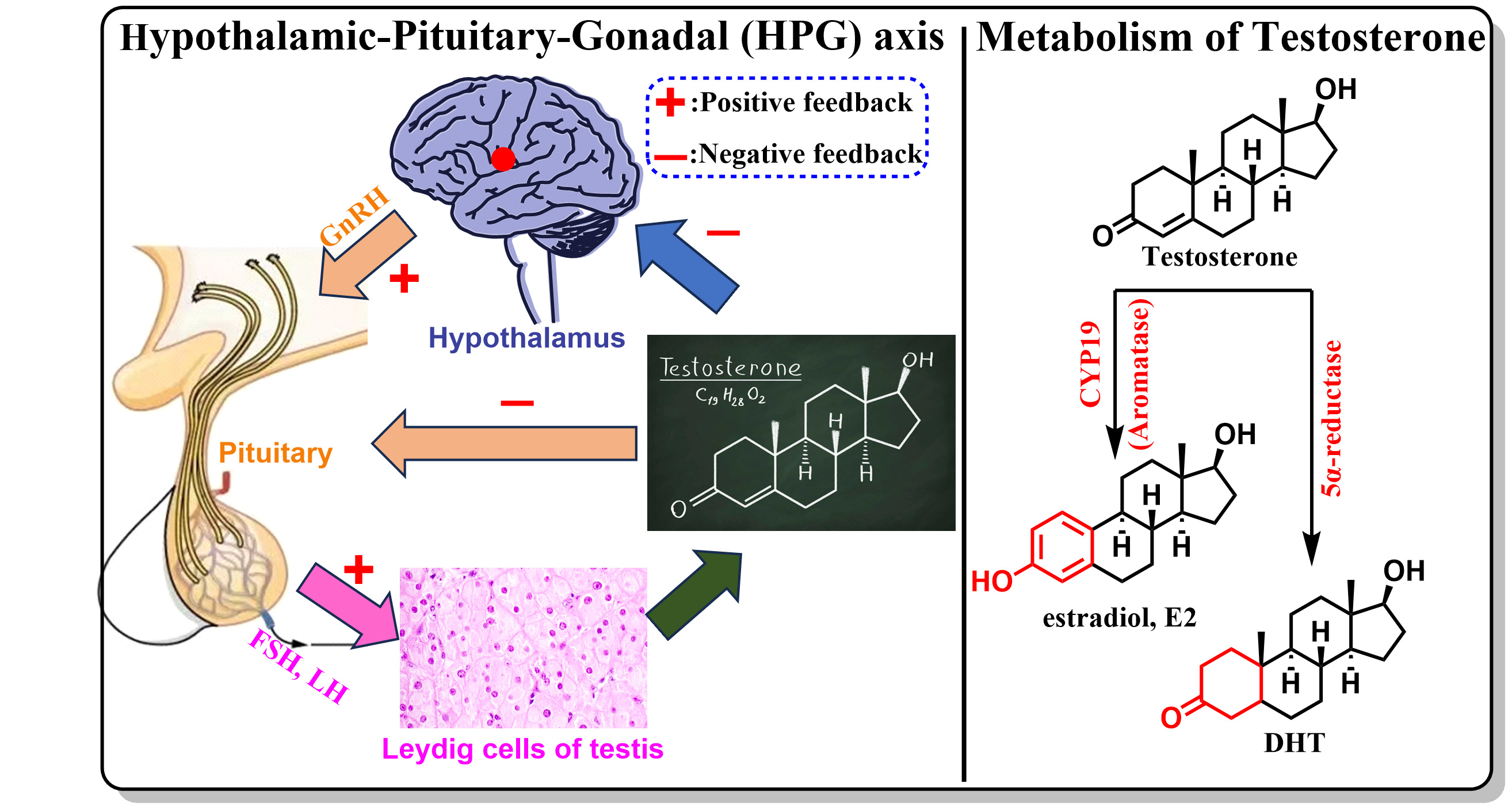Testosterone formation and metabolism
Abstract
Testosterone is a 19-carbon androgen synthesized primarily from cholesterol, mainly produced by Leydig cells in the testes. Its production is regulated by the hypothalamus-pituitary-gonadal (HPG) axis. Here’s how the process works:
1. Gonadotropin-Releasing Hormone (GnRH): The hypothalamus releases GnRH in response to various signals, including neurotransmitters. This hormone stimulates the anterior pituitary gland.
2. Luteinizing Hormone (LH) and Follicle-Stimulating Hormone (FSH): GnRH promotes the secretion of LH and FSH from the pituitary. LH specifically acts on Leydig cells, stimulating them to convert free cholesterol into testosterone via steroid hormone synthases.
3. Metabolism of Testosterone: Once produced, testosterone is primarily metabolized in the liver. Approximately 5% is completely oxidized, while 95% is converted into inactive metabolites through reduction and conjugation, which are then excreted in urine.
4. Main Metabolic Pathways:
● Aromatization: Testosterone can be converted into estradiol through the action of aromatase.
● Reduction: It can also be converted into dihydrotestosterone (DHT) by the enzyme 5α-reductase.
The ability of T999 to significantly increase testosterone levels may be linked to its inhibition of these enzymes (aromatase and 5α-reductase), which would decrease the conversion of testosterone to estradiol and DHT, respectively. Additionally, the steroidal saponins found in T999 may serve as precursors for the synthesis of various sex hormones, further supporting testosterone production.

Be related to


